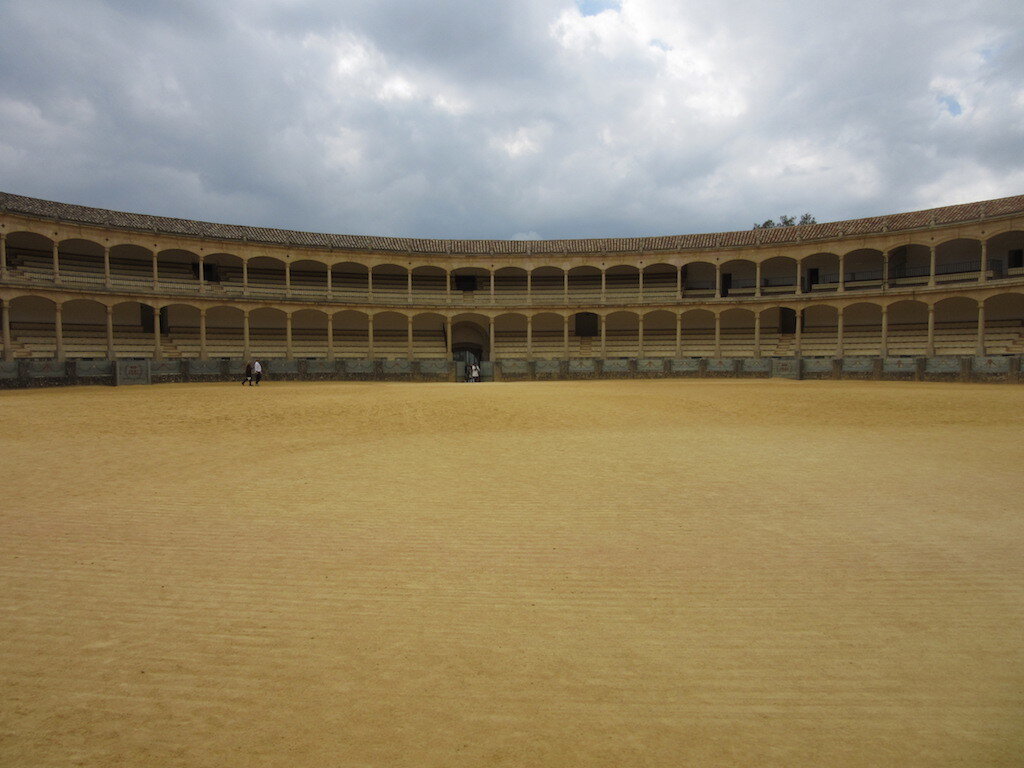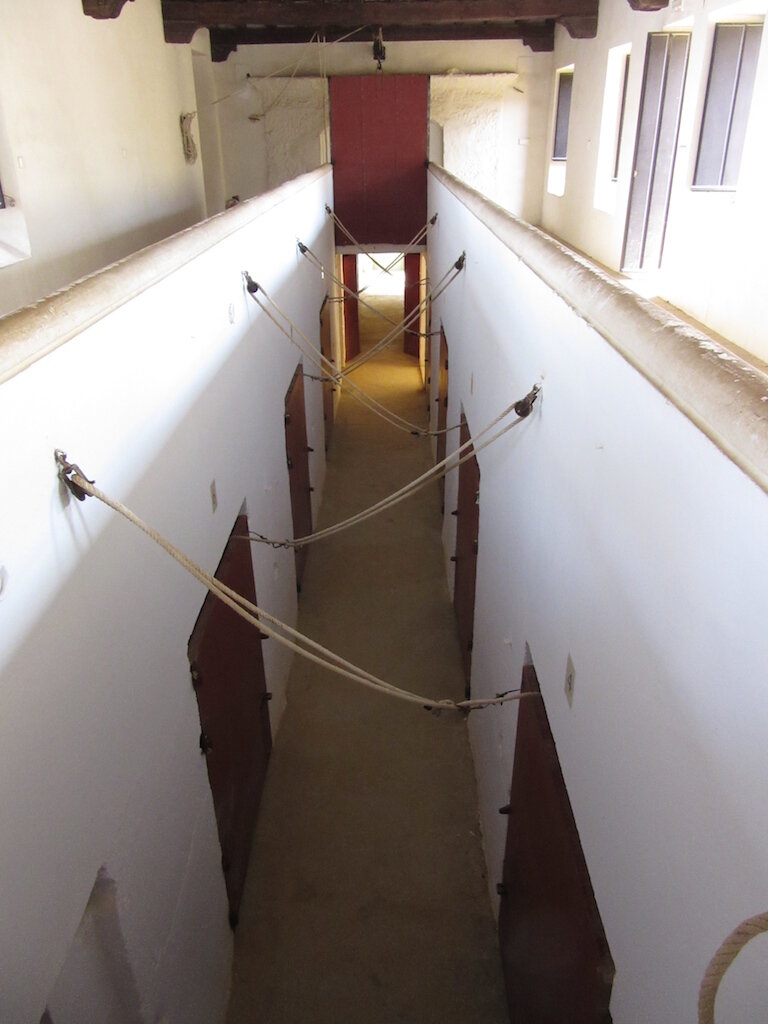Zaha Hadid vs Zen Bull Fighting
I recently visited the historic bull-fighting ring in Ronda, Spain. It’s more a modernist shrine than a sporting arena. It got me musing about the design of sports stadiums, in general, their elements of barbarism and beauty going back to the Roman Coliseum with its gladiator battles and the Greek Olympic games. The drama and fighting going on today over the proposed Zaha Hadid Olympic stadium in Japan is a less bloody conflict, but equally contentious. Ditto for the violence created in Brazil recently, where the World Cup drew millions of people to the streets and prevented new stadium designs from being considered. In my backyard in San Francisco conflicts over a new Warriors basketball stadium on the Bay are deemed New York Times worthy.
Zaha Hadid Olympic Stadium
Plaza de Toros, inside
Plaza de Toros, outside
Plaza de Toros, interior
Plaza de Toros, bullpen
It’s easy to see how sports stadiums and professional sports can be lightning rods for public opinion. The economic and political stakes are as huge as the egos involved. It is very much a modern design challenge, balancing commercial interests with civic needs and tribal interests. Slapping logos on stadiums, using the space to promote private businesses, staggering ticket prices, and the inevitable traffic snarls fly in the face of civic decency. Are we to accept these for the sake of a local sports team?
The Plaza de Toros in Ronda, in contrast, is an elegant stadium, a pure piece of design.
The city of Ronda is perched on a dramatic gorge and seems to have been a magnet for visitors since neo-lithic times. Just a short drive from the Alhambra, it has charmed the likes of Hemingway, Armani, Rilke, Orson Welles and others. Little is written about the ring itself. Way beyond its significance as the original bullfighting ring, it is one of the simplest and most elegant architectural structures I have ever experienced.
If a building’s circular form works well architecturally it joins the select company of the Guggenheim Museum in New York or the Coliseum in Rome. The circle has a satisfaction of its own with its simplicity and gestalt, but there are reasons why it is an ungainly form to construct in our modern world. It takes a guy like Bucky Fuller to make it work. This bullfighting arena does the circle justice and also has character akin to a Japanese shrine, some Amish outbuilding, a sanctuary, or something Donald Judd would have sanctioned in Marfa. The compelling fact that it is used for a blood sport is what makes the irony complete. (Today it is used more for concerts than bullfights.)
You might not notice it as you walk around Ronda. Its unassuming curvaceous exterior shape blends modestly with the character of the town. Unlike stadiums today, there are neither banners nor signage nor parking lots. When you get inside you see elegant, classic architectural proportions, unadorned columns, simple details, and an overarching purity. Light enters through the central ring but also through open windows in the interior walkways where rustic wood ceilings, soft plaster walls and local clay tiles create a feeling of calm. The seating is spartan and entirely democratic with no luxury boxes. The muted pastel color palette takes its cue from the ochre colored sand in the ring, which is earthy, friendly and natural. All this creates a harmony with its natural surroundings that (like the ivy on the bricks of Wrigley Field in Chicago) pleases redneck and highbrow alike.
All the design elements in the ring serve a function. There is neither artifice nor decorative embellishments. Basic numbers identifying the seats are the only signage to be seen. Even the pens where the bulls and horses are staged look like a Bauhaus minimalist designed them. It’s as if some silent hand of design had been at work here and some master architect made sure that nothing was dumbed down, that every detail was consistent. Everything serves as a backdrop to the theatre.
The integrity, simplicity and quietness of the design is its defining character. But what truly sets this place apart from all other sports stadiums is the fact that there are no commercial messages, distractions, or promotions to be seen. The peace created is like that which we experience being in a cell-free zone. The mind quiets. It dredges one out of oneself in an almost spiritual way, which is not surprising, I guess, given that churches and shrines are some of the only modern places where we can have this same experience.
Can we take a design lesson from Ronda for the US today? Probably not. Sports are commercial businesses of an extreme order and made possible by beer, auto, and fried food messaging. It is more likely that we would see bullfighting established as a new spectator sport in Marin County. But the lesson for modern stadium architects might be that designing something huge and out of sync with local sensibilities can be like waving a red flag in front of the public.







